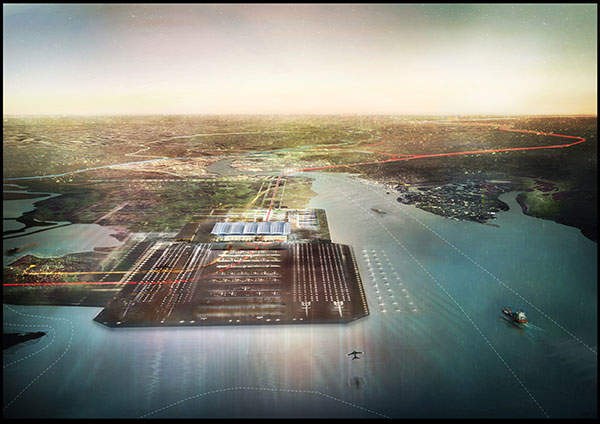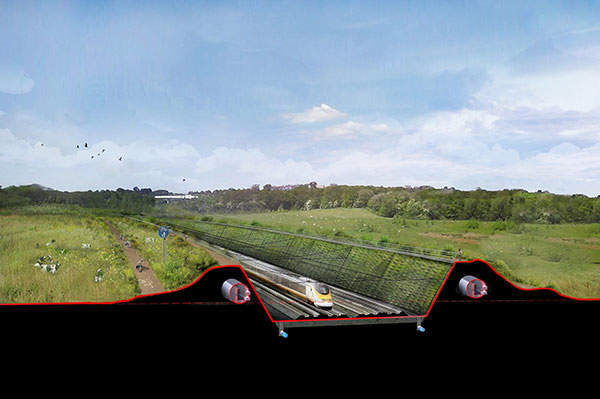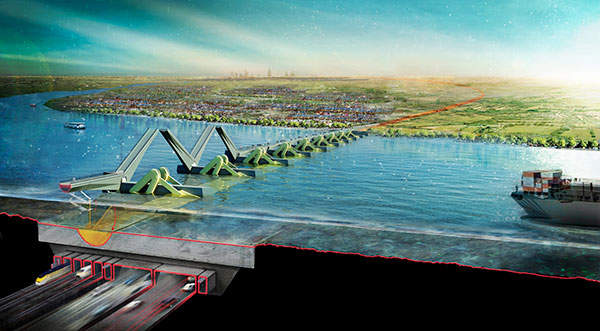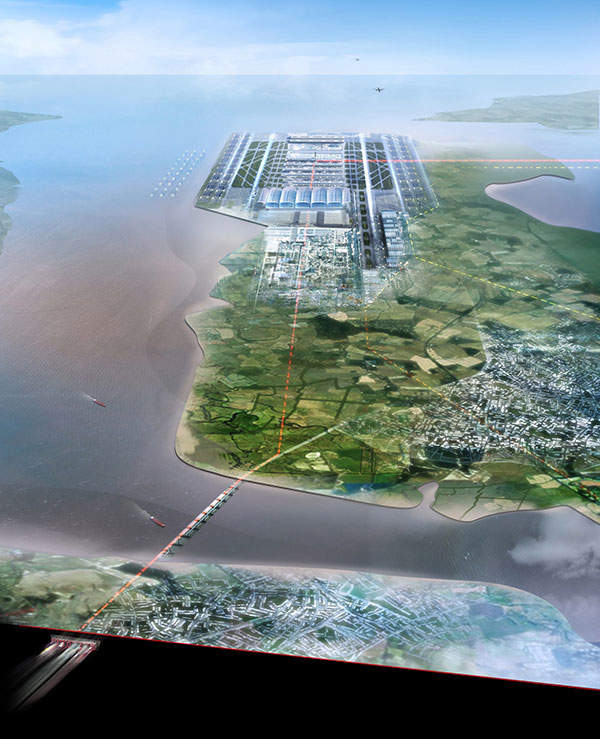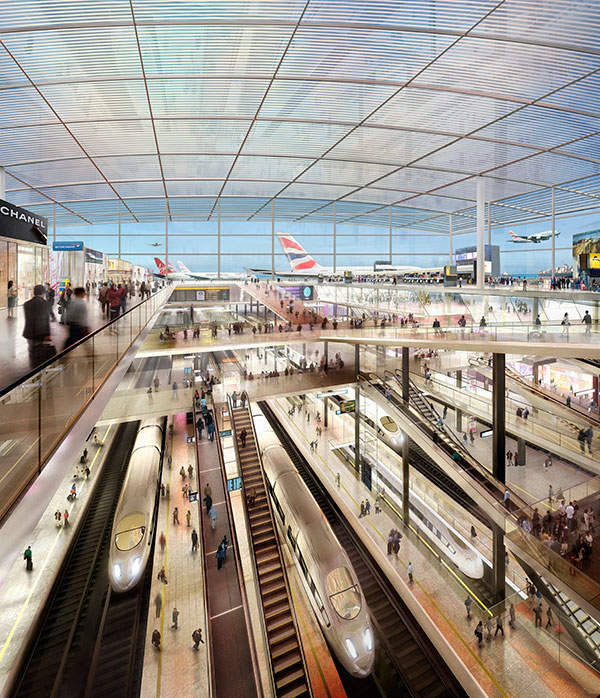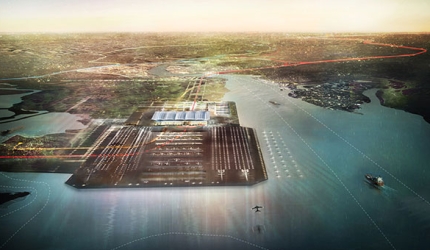
Thames Hub is a future infrastructure development project proposed in the United Kingdom. The project will integrate rail, freight logistics, aviation, flood protection and energy hub in the Thames Estuary. Thames Hub won ‘Project of the Year’ at the 2012 Global AirRail Awards.
Thames Hub project details
The Thames Hub concept was proposed by architects Foster + Partners, infrastructure consultants Halcrow and economists Volterra. The proposal was launched at the Institution of Civil Engineers in London in November 2011, with costs estimated at £50bn ($79.4bn).
The project will create a vital infrastructure network between the north and south, connecting the cities of the midlands and the north directly to continental Europe. The concept includes the creation of a rail network around London, construction of a new airport in the Thames Estuary, a new barrier crossing for flood protection, and a number of communication and energy saving utilities.
It is expected to generate £150bn ($238.1bn) of economic and environmental benefits with a benefit-cost ratio (BCR) of 3:1.
Orbital Rail network
The Orbital Rail network includes a new four-track, high-speed passenger and freight link around London.
The rail route is set to be located at the M25 orbital motorway close to London and it will complete a missing connection between the existing High Speed 1 (HS1) rail line and the proposed high-speed line. Around 30% of the route will run through tunnels and it will be integrated with the new airport in the Estuary.
The new rail link will create an unmatched freight distribution network, while placing Britain at the midpoint of manufacturing distribution in Europe. It will also ease congestion on roads and commuter services by providing an efficient and reliable passenger rail system, while it is expected to take out an estimated 4,000 trucks a day from the M25 motorway.
Related project
London 2012 Olympic Park Master Plan, United Kingdom
Winning the right to host the Olympic Games stirs a great deal of national pride, which explains why governments are so keen to support Olympic bids.
Thames Estuary Airport
A new international airport in the Thames Estuary on the Isle of Grain will satisfy the capacity required at present and allow for future expansion. Reclaimed land stretching into the Estuary will make up around 50% of the airport’s area.
The airport will have four runways and a rail station under the passenger terminal. It will reduce noise pollution and improve flood protection. The new Estuary Airport will use electricity from tidal power generators. It is also set handle 150 million passengers per annum, while helping the UK to retain its global aviation hub status by offering more international routes.
The Thames flood barrier
A new barrier crossing will provide effective flood protection for London and the Thames Gateway until 2100 and beyond. It will extend the flood protection area by 1.5 times in comparison with the existing barrier. The barrier generates carbon-free energy by using tidal power. The hydropower generators within the new flood barrier and the hydropower arrays in the water can generate up to 525GWh/year of energy, enough to power 76,000 homes.
The new flood barrier can facilitate housing shortfalls by creating new flood-protected land for residential development. It can serve as a common platform for rail and road tunnels, and also as a new corridor for utilities and communications networks.
Energy and communications infrastructure of the Thames Hub
The project will deliver a new communications and utilities spine for power, utilities and data. The Spine will run northwards along the track of the future high-speed rail line and allow reliable electricity and data links to the communities beside its path. It will include conduits for high-voltage power, broadband fibre and water distribution. The conduits incorporated within the new flood barrier will be integrated with the Orbital Rail and high-speed rail routes.
The Spine will deliver the first national smart distribution network in the world. The installation of electricity transmission within the Spine will eliminate the problems related with the upgradation or replacement of old pylons and distribution systems. The system can also be accessed easily without conducting earthworks for maintenance and inspection purposes.
Spurs will ensure data connectivity for high-tech industry and deliver high-speed digital communication networks for local communities along its length.

